Thanks for checking out our template! This guide will introduce you to how forecasting works in Modeloptic.

Modeloptic Forecasting Crash Course
Since you're starting from a template, there is a lot of logic pre-constructed for you that you can modify as desired.
Most of the forecast logic lives on the Model page:
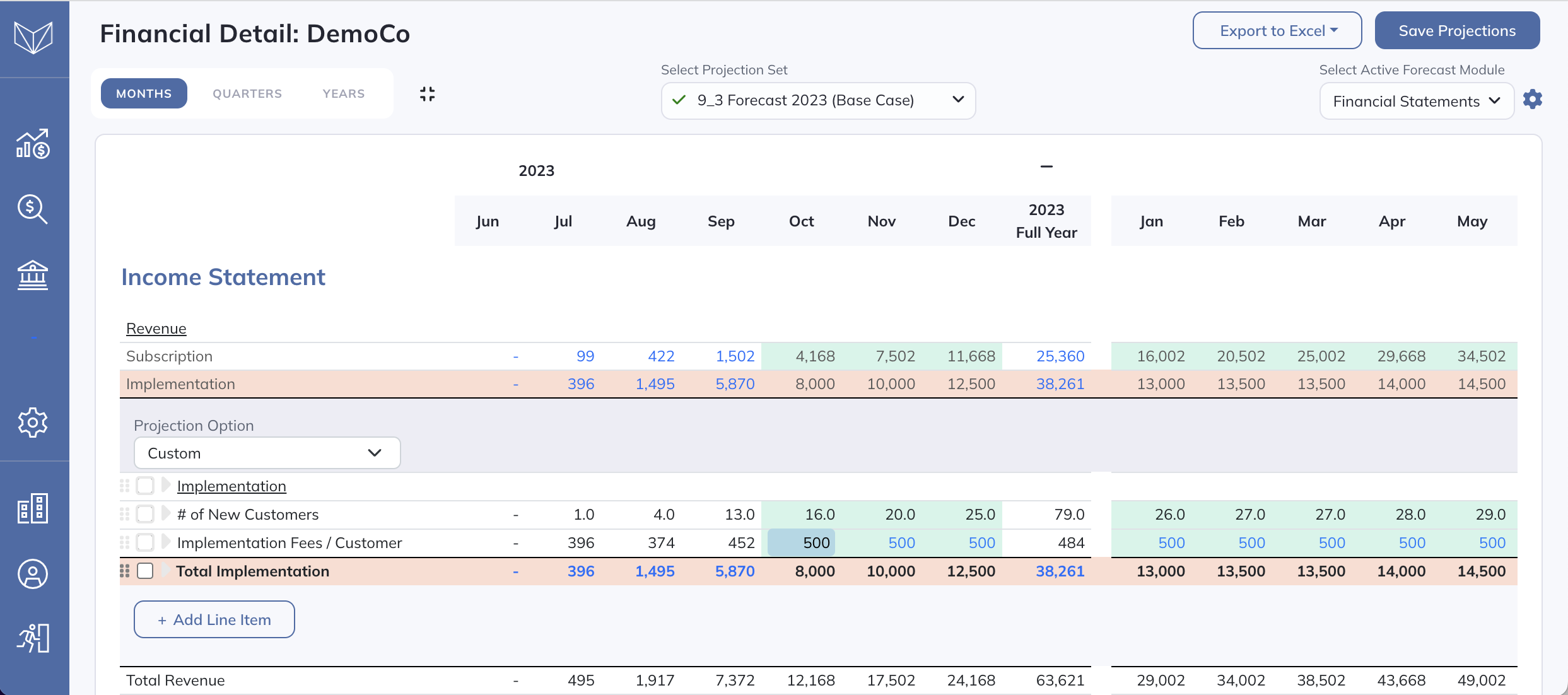
Each line item can be forecast either via built-in options (like % of revenue or trailing average) or via custom logic.

For an overview of the built-in options, see the Basic Forecasting guide.
For an overview of forecasting with custom logic, see the Advanced Forecasting guide.
One of the core concepts underpinning how Modeloptic (and how financial modeling in general) works is the idea of a table. Modeloptic gives you powerful tools for building, managing, and composing these tables.
To navigate between the tables in your model, you can use the Table Navigation screen, which can be accessed by clicking the name of the active table in the top left:

That will open up the Table Navigation screen, which looks like this:
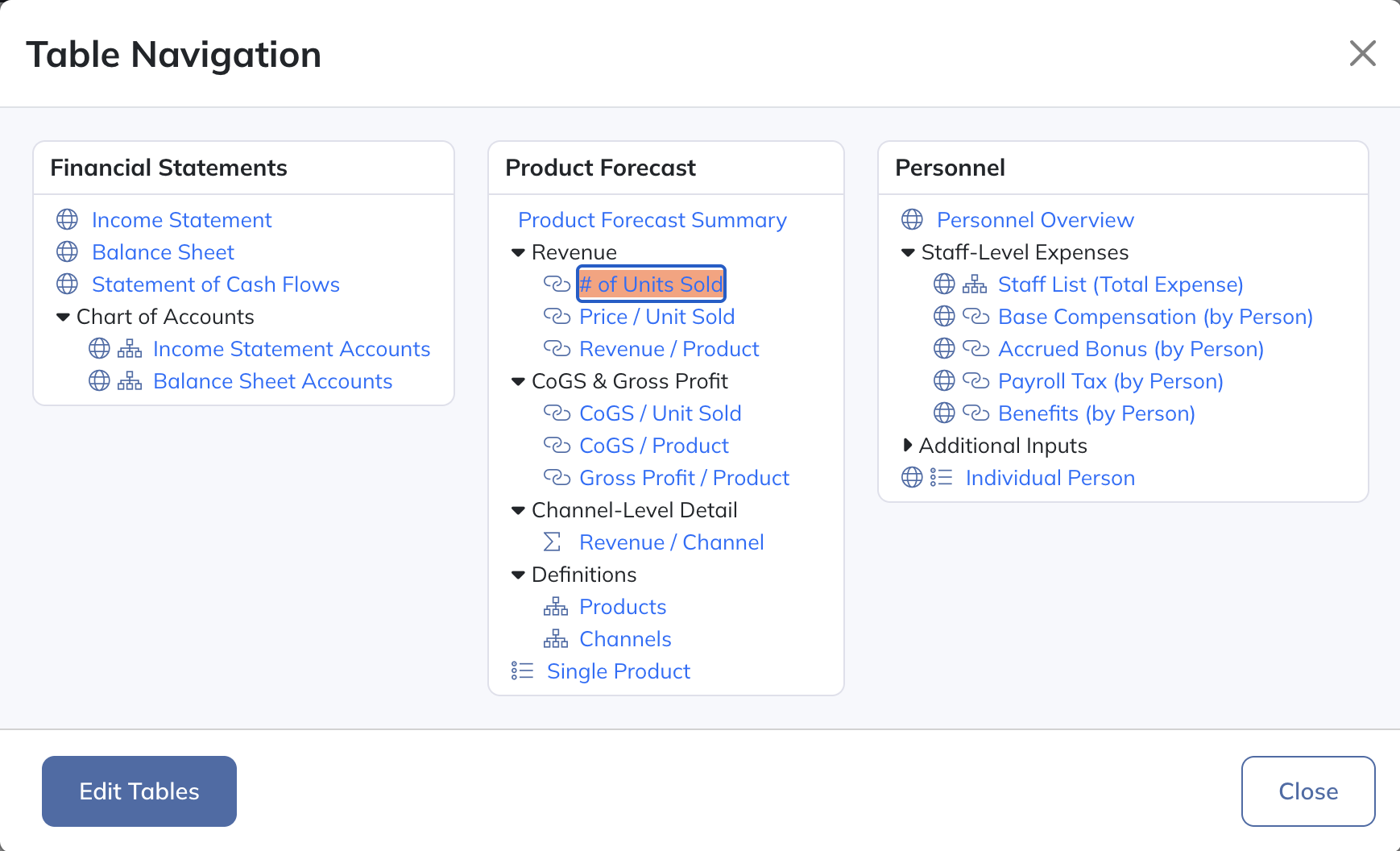
If you click on "Edit Tables" in the bottom left of this screen, you'll be able to add new tables, delete existing tables, and reorganize your table layout.
Modeloptic allows you to use a variety of table types to construct your model. The simplest is a Free-Form table, which allows you to add whatever rows you want, and link them together however you want (much like you would in Excel):

If you're forecasting a collection of similar items (like employees, customers, product SKUs, etc), Modeloptic's more advanced table types are very powerful for forecasting these collections and managing the complexity they involve, and let's you operate on them as a group instead of as individual lines.
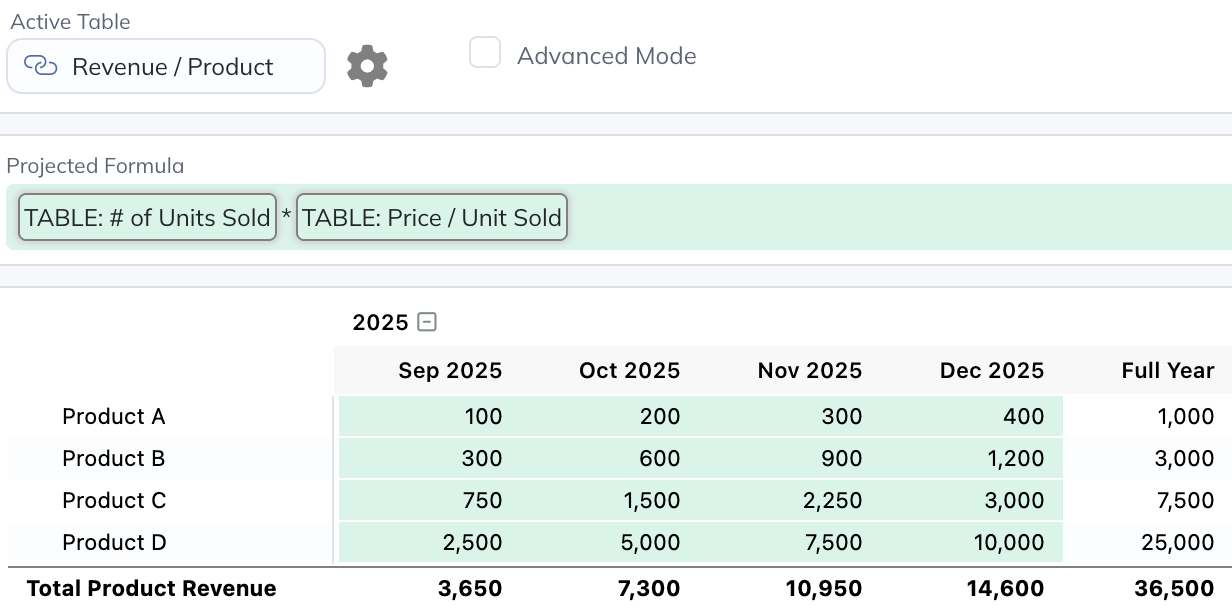
For more detail, see the Forecasting with Tables section of the documentation.
For a more detailed example of how powerful these tables can be, see our walkthrough here.
Forecasting staff-related expenses can using a collection of pre-set tables that Modeloptic creates for you:
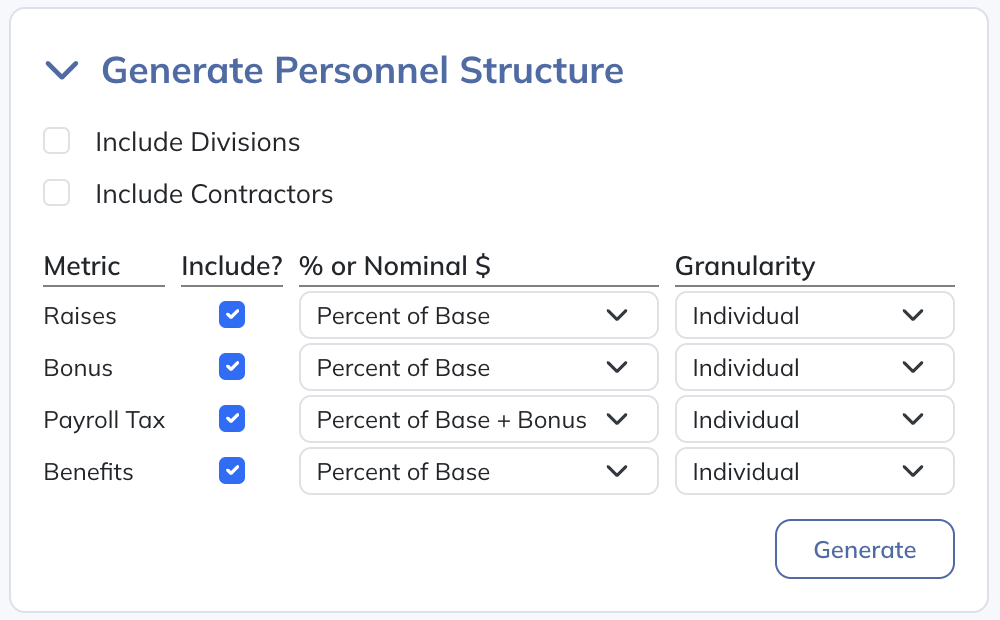
After generating your personnel tables with the desired settings, you can then populate the tables with your own staff list and hiring plan, which will look something like this:

See the Personnel Presets section of the documentation for more detail.
Projection sets are how different versions of your model are organized. You can think of these as different versions of an Excel file. They typically contain forecast logic as of a given point in time, or present different scenarios.
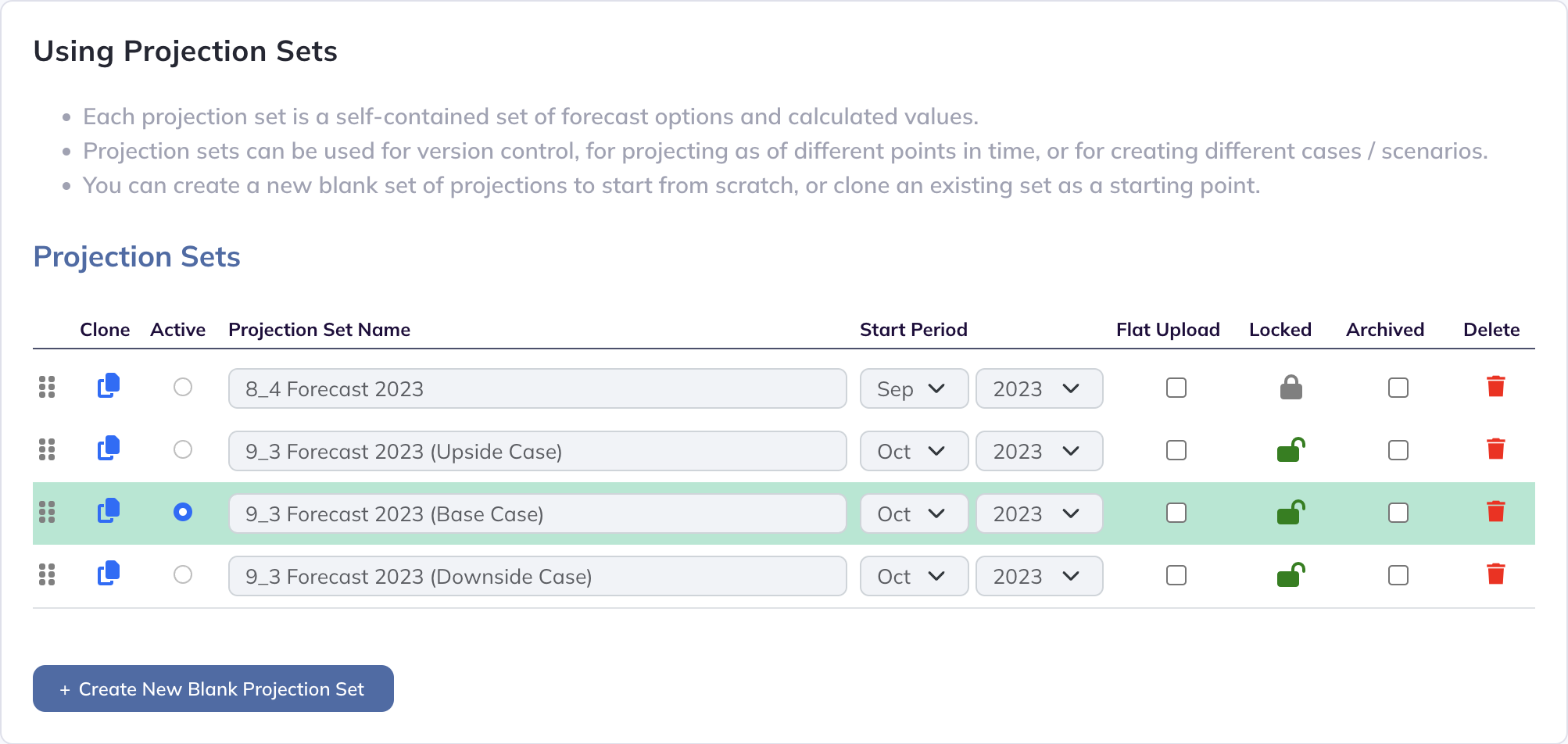
See the Projection Sets section of the documentation for more detail.
Since this is a template, it won't contain any historical financials to start. Once you sign up for our free trial, you'll be able to connect your accounting system or upload your financials from Excel.
Incorporating your historical financials presents many benefits, including:
- Easily keeping your model updated with the latest actuals each month
- Seeing transaction-level detail from within your forecast and reporting materials
- Leveraging automated variance reports to see actual performance against plan
- Much more
There is a lot more to know, but this should be enough to get you started!
Feel free to contact us with any questions or read through any section of our documentation to learn more about how Modeloptic works.